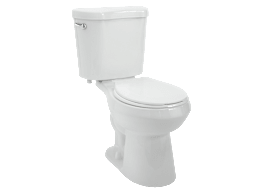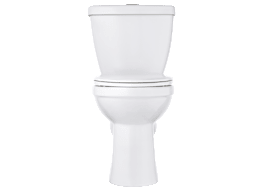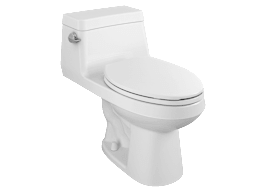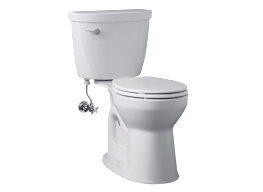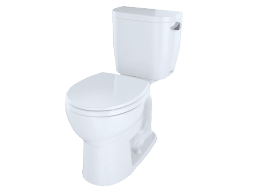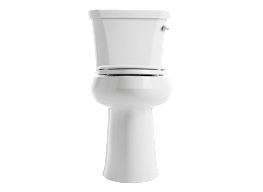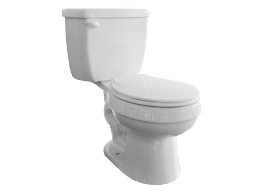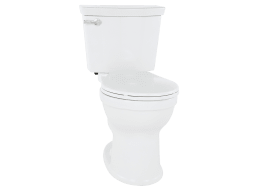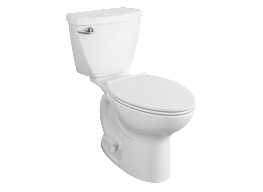Pros and Cons of Wall-Mounted Toilets
These pricey fixtures can work with any bathroom remodel. But are they worth it?
When you shop through retailer links on our site, we may earn affiliate commissions. 100% of the fees we collect are used to support our nonprofit mission. Learn more.
Installing a wall-mounted toilet is one way you can modernize your bathroom.
It’s a bathroom designer’s dream: A sleek, space-saving toilet, absent that unsightly tank, that can be installed at precisely the right height for you. Plus, the nature of the design—a wall-mounted toilet doesn’t contact the floor—makes it a breeze to keep the area around it clean.
Pros of Wall-Mounted Toilets
Wall-mounted toilets have some advantages over standard toilets.
Built to Code
With their compact size, wall-mounted toilets offer more flexibility when designing or updating a bathroom. “These toilets can meet building-code clearances where floor-mounted toilets might not,” says John Banta, the CR test engineer who oversees Consumer Reports’ toilet tests.
In some municipalities, building codes require at least 21 inches in front of the toilet. Wall-mounted toilets can save as much as 10 inches by moving the tank into the wall. And the bowl itself can be adjusted to sit 15 to 19 inches off the ground.
Relatively Easy to Unclog
During installation, the tank and the carrier are mounted to the studs and concealed with drywall, with an opening for the flush buttons. Access to the tank is through this opening. If something stops working after installation, the flush panel simply pops off and an adult-sized hand can reach inside to fix the plumbing.
Cons of Wall-Mounted Toilets
While wall-mounted toilets have a couple of benefits over floor-mounted models, there are some disadvantages to be aware of.
More Expensive Than Standard Toilets
Wall-mounted toilets come at a premium over standard toilets. Expect to pay several hundred dollars more for this type of fixture, not counting the cost of professional installation. This is not a do-it-yourself project, Banta says. “You’re already paying more for this type of toilet, and depending on your circumstances, you might spend several hundred more to move the supply and waste lines or to reconfigure the studs,” he says. “It could easily be three times more expensive to switch from an existing floor to a wall-mounted toilet.”
Substantial to Install
Installing a wall-mounted toilet requires opening a wall, rerouting the waste pipe, and, if you plan to keep the same flooring, patching the tile where your old toilet was. You also need to know whether your framing consists of 2x4 or 2x6 studs when choosing the tank, because manufacturers make carriers for both types. “f you’re installing one of these in an older home, you would likely need to rework the studs to get them in the proper location for the carrier,” Banta says. As a result, wall-mounted toilets are more expensive to install than floor-mounted models.
How CR Tests Toilets
To develop our toilet ratings, CR test engineers put the fixtures through a series of tests involving waste removal, bowl cleaning, and drain line clogs. To test solid waste removal, we add marble-sized plastic beads, weighted sponges, and filled water bags into the bowl and measure how well each flush handles our simulated waste.
We test a toilet’s bowl-cleaning abilities by painting a line along the inside and judging how much of the paint remains after flushing. Finally, we observe how well a toilet pushes waste through the drain once it has been flushed. That matters if your waste line travels a long way to the sewer.
We put our first batch of wall-mounted toilets through the same tests we use for floor-mounted toilets—though we built special jigs for each tank carrier. Generally, the wall-hung fixtures performed about the same as standard toilets.
Here’s an overview of the two wall-hung models in our ratings.
















